Mountain gorillas are an endangered species, and only two national parks—Bwindi Impenetrable Forest National Park and Mgahinga National Park—are home to them. Uganda is one of the lucky nations in the world to have them including Rwanda and the Democratic Republic of Congo.
Over 50 gorilla families, each with 10 to 40 members, may be found in Uganda. However, 20 habituated gorilla groups can be found in the Bwindi Impenetrable Forest. Only eight people can visit the habituated gorilla families each day, and they are spread out among the four sectors of Bwindi National Park. These include Ruhija, Rushaga, Nkuringo, and Buhoma. For each gorilla group, there is about 8 permits accessible daily basis. Families of gorillas are given names based on how they were formed, where the group is located, and the name of the dominant silverback.
The Nyakagezi group is the only Ugandan gorilla family that lives in Mgahinga National Park. Yet has one of the biggest gorilla families anywhere, very few travelers visit Mgahinga for gorilla excursions. The greatest area to visit for a gorilla habituation experience is Mgahinga Gorilla Park because it receives fewer visitors and therefore less congestion.
When going on a gorilla journey, there is no such concept as the nearest or farthest gorilla family. The topography could change, and the time required is always erratic. Gorillas never dwell in the same spot twice; they travel from place to place every day. You could hike for two hours today, but other hikers might need five or six hours the following day. Nevertheless, tour guides can assist you in reserving your favorite gorilla trekking area.
GORILLA FAMILIES IN THE BUHOMA SECTOR
Habinyanja gorilla family
In 1999, this gorilla population was one of the first to welcome visitors. Silverback Mugurisi, one of the 17 members of the gang, serves as its leader. The group was originally observed next to a marsh in Bwindi and was given the name “Habinyanja” from the indigenous word “Nyanja” (place with water).
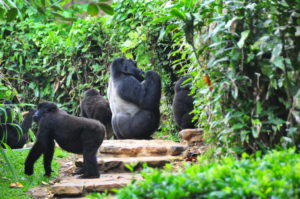
Due to power disputes over the leadership of the family following the silverback Mugurisi’s death due to miscommunications, there were two separate families created as a result of the two powerful male brothers of the silverback. Mwirima established the Rushegura family as a result of Rwansigazi’s decision to keep the Habinyanja group.
The 17 members consist of a silverback, a blackback, five adult females, one sub-adult, three juveniles, and six young ones. Travelers who wish to follow this family can spend 3 to 6 hours, and it is preferable to stay in a lodge in the Buhoma region for simple hiking.
Mubare Gorilla Family
This family in Bwindi is the easiest to monitor due to their location. The Mubare family is the oldest habituated gorilla family in Uganda, and the name Mubare was given to them by the first gorilla trackers in the Mubare Hills. 11 people make up the group, which is now headed by Kanyonyi. However, initially under Ruhondeza’s leadership, the group has shrunk in size over the years from 18 members when first observed attributed to infighting, death—including Ruhondeza, the group’s caretaker—and member movement to other groups, leaving roughly 5 members. In 2013, new members, including a powerful silverback, joined, bringing the total to 11. There are six adults, one teenager, and three young children.
Over a fifty-year period of his life, Ruhondeza was under constant observation by scientists. A guide can find his burial because it is identified and marked in the park.
Rushegura gorilla family
There are 19 individuals in the Rushegura family, including a silverback. When Rwansigazi and Mwirima split off from the bigger Habinyanja group in 2002, this is the group that resulted. The name Rushegura is obtained from the “Ebishegura” tree species, which is widespread in the family’s home range. As the number of people expanded from 12 to 19 in 2010, Mwirima’s ability to establish a secure and tranquil household is commendable. Due to their placid disposition and lack of shyness, they are easily located in Buhoma village and occasionally walk around the camp gardens. Since they can elect to go off and take longer to trek them down, it’s possible that they will trek for a shorter period of time-roughly 1-4 hours.
Katwe gorilla family
In the Buhoma sector, Katwe is a more recent gorilla family that has been habituated for around three years. The group contains 7 members including 1silverback heading the group. In August 2018, the group was accessible for routine trekking. There have only been three habituated gorilla families in this area for a number of years, which has increased demand for gorilla permits because the location is closer to Queen Elizabeth Park and has more upscale Bwindi hotel options. There are currently 32 gorilla passes available for purchase at Bwindi Gorilla Park.
Muyambi gorilla family
As of early in 2019, the Buhoma district of Bwindi’s Muyambi gorilla family was the area’s newest gorilla family. There are 7 family members in it. In the Mubare family, Muyambi was an adult member. After severing ties with the family, it formed the Muyambi group, which it still belongs to now. As they go about their everyday activities of eating, interacting, resting, and moving on the ground and in the treetops, gorillas are fascinating to observe. In the year 2020, the family gained a new member.
GORILLA FAMILIES IN THE RUHIJA SECTOR
Oruzogo Gorilla Family
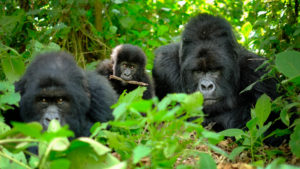
By typical measures, this group—which has 25 members—is substantial. It has two silverbacks and is the second family in the Ruhija region. Tibirikwata is the leader of the team that initially welcomed guests in 2011. Although it is not a difficult journey, you should have average speed and endurance. The “Alchornea hitella” plant, oruzogo in the local language, dominates the area in which the Oruzugo family thrives and from which the family name also derives.
The group has expanded and is well-liked by tourists because of the multiple babies that have been born from the females Ntamurungi, Musi, and Kakoba on numerous occasions.
Bitukura Gorilla Family
The river where the family members were first seen inspired the name of the Bitukura tribe. The group originally consisted of 24 gorillas, but owing to family problems, some gorillas just opted to quit the group. These individuals were likely taken in by other families, leaving the group with only 14 members. Although it usually takes at least two years for a group to get habituated, in this case, it might only take fifteen months. They have a strong bond and frequently get together with the Kyaguriro family, who are already accustomed to them.
The only issue in the Ruhija district of Bwindi, where the group is located, is the lack of housing alternatives, particularly affordable ones. It is nevertheless conceivable, though not advised, for tourists to spend the night in the more than one-hour-distance Buhoma area before traveling to Ruhija for a pre-tracking orientation. At the latest 6:30 am, you must leave.
Kyaguriro Gorilla Family
15 members make up the Kyaguriro gang, which is led by Rukina, who seized control from the previous Zeus. In 1995, the gorilla group was acclimated when Rukina died in April 2015 from an electric shock caused by lightning. Since then, environmentalists have separated the gorilla group for research purposes by conservationists, and visitors have limited access. In general, it is known that the entire family spends practically all of their time in the inner forest and hardly ever ventures outside of it. The gorilla families in Uganda, Rwanda, and the Congo all exhibit different behavioral patterns, according to research done on this group, which has produced some intriguing significant conclusions.
Mukiza Gorilla family
Previously, the Mukiza family belonged to the Kyaguliro gorilla group, led by Rukina, who passed away in 2015. The large gorilla family broke after Mukiza, the young silverback, lost his position as leader of the large gorilla family and left with a substantial portion of the members that now make up the current family. It has ten members, including Mukiza, the head, four adult females, one sub-adult, and four babies.
GORILLA GROUPS IN THE RUSHAGA SECTOR
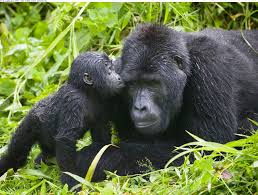
Nshongi Gorilla Family
In 2009, when the community first welcomed outsiders and tourists, there were 37 members of the Nshongi family. The Bwindi forest’s largest gorilla family to have ever been habituated was there. There are currently 26 people and 4 silverbacks there. The gorilla family was given the name Nshongi after the river Nshongi, where they were initially discovered (referring to the deep honey-like color of the river). The family was distinctive because of its size when it was first made available for tourism in September 2009. Despite the numerous silverbacks, the family managed to coexist peacefully before they split up in 2010. Surprisingly, Nshongi, who was not even the oldest silverback, served as its head.
With 26 members, the Nshongi group persisted, whereas the silverback Mishaya group dispersed with 10 members.
Mishaya Gorilla Family
As soon as Mishaya left Nshongi in 2010, he had a reputation for provoking battles with other gorilla families—not simply to defend his own, but also to snatch females from other gorilla groups. He was injured during one of the confrontations with an unhybridized/habituated gorilla family, but he was able to gather a small number of females to accomplish his goal of 12 members. Mishaya was the lone adult male in the group and passed away in 2014.
Bweza Gorilla Family
After Bweza decided to remain independent from the Mishaya group and left with six members, this group was established in 2012. The Nshongi gorilla family, the largest gorilla family ever habituated in Bwindi is where the group got its start. In 2010, Silverback Mishaya and Nshongi split up, later Bweza followed them, and the group now consists of 12 people who are still under Bweza’s leadership.
Kahungye Gorilla Family
This group of 17 individuals is headed by Rumanzi and consists of 3 silverbacks, 3 blackbacks, 3 adult females, 3 sub-adults, 3 juniors, and 2 babies. The group, which had 29 members when it was habituated and allowed for gorilla trekking in 2011, broke up due to competition between the male-dominant members, which resulted in the development of additional groups. The hill in the Rushaga region where they were found gave the Kyahungye group its name.
Busingye Gorilla Family
This group was habituated in 2013. The Silverback Busingye leads this group after splitting from the Kahungye group though his name means peace, Busingye is known for frequent fights and stealing females from neighboring Gorilla groups as a way of showing power, ambitions, and dominance. The group consists of 9 individuals including 1 silverback, 3 adult females, 1 juvenile, and 4 infants
Rwigi Gorilla Family
A new gorilla family has been made available for trekking in the recently declared Bwindi Impenetrable Forest National Park. In the Rushaga area of Bwindi Park, the Rwigi family of gorillas has recently become habituated. The Rushaga region of Bwindi Forest Park is also home to the Kahungye Gorilla family which has split off to form the Rwigi Gorilla family. In order to have a novel and unforgettable mountain gorilla tracking experience, visitors to Bwindi forest can now observe the new Gorilla family. Due to disagreements with other silverbacks in the Kahungye family, the now-dominant Rwigi chose to start his own family after putting up a valiant battle, Rwigi Silverback fled with a few adult females and juveniles to form a new family which is now known as the Rwigi Gorilla Family.
Mucunguzi gorilla family
The Rushaga region of Bwindi Impenetrable National Park is home to the Mucunguzi gorilla group, which has recently become habituated. The Bweza gorilla family’s third and youngest silverback was given the name Mucunguzi, which means “savior,” in reference to its role in saving the group. Eight mountain gorillas, including a silverback named Mucunguzi, formed the Mucunguzi group after breaking away from the Bweza family.
Kutu Family Gorilla Family
In Bwindi National Park’s Rushaga region, the Kutu gorilla family is a recently discovered group. People that would like to go for gorilla habituation should choose this group because it is still in the process of becoming accustomed to visitors. It has eight members in all, plus one silverback.
GORILLA FAMILIES IN THE NKURINGO SECTOR
Nkuringo Gorilla Family
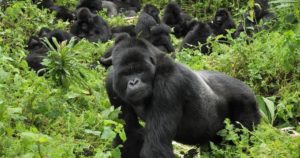
After a two-year habituation procedure, the Nkuringo family became the first gorilla group to become habituated in the entire southern portion of Bwindi Impenetrable National Park in 1997. The original leader of this group, which now numbers 19, was the great silverback. He left two silverbacks, Rafiki and Safari, after his death in 2008, and Safari eventually took over from Rafiki. The community gave the group the name “Nkuringo” because they were initially observed close to a circular hill. Because the group resided close to the settlements outside the park, they frequently came into contact with people and frequently sneaked into their plantations to consume their food, which led to disputes. It was chosen to accustom the group to the idea that gorilla conservation will benefit the community and bring benefits to tourism in the nearby communities.
In order to establish a buffer zone and reduce human-wildlife interaction, the former local human settlers in the border villages in the Nkuringo area were evicted as a result. It takes a little more effort and endurance to track the Nkuringo Group due to its terrain and is considered the hardest trek in Bwindi impenetrable forest national park. However, few people voice their fatigue complaints after their unforgettable lifetime experiences.
Bushaho gorilla family
A follow-up study was done as a result of the Nkuringo Family members’ ongoing departures as individuals. Early in 2012, a hunt for them and their whereabouts was started. It was discovered that one of the Silverbacks, Bahati, who had left the Nkuringo family earlier, was the head of a rival family. Among the people he oversaw were some former Nkuringo family members as well as other non-habitual people. What initially began as a follow-up exercise turned into close observation of the new parallel family’s conduct.
Later, the group became acclimated and was given the name “Bushaho” after the name of the area where they typically go foraging. It has 8 members, including 1 blackback, 3 adult females, 1 sub-adult,1 juvenile, and 1 infant.
GORILLA FAMILIRES IN MGAHINGA NATIONAL PARK
Nyakagezi Gorilla Family
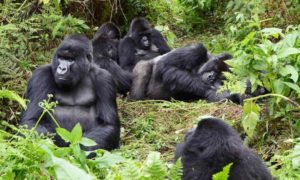
Mgahinga National Park is home to only one habituated gorilla troop. The group, led by Mark the dominating Silverback, is unpredictable and frequently migrates to Rwanda and the Congo. Two more silverbacks join Mark in a group of ten, who total 10. Despite the fact that they have been stable and are currently residing in Uganda, it can be challenging to see the family due to their erratic moves. 2013 saw the addition of a new member, bringing the total to 10.
You must get in touch with the authorities via your tour operator to learn their precise position due to their highly erratic behavior. Bookings for permits can be made at Uganda Wildlife Authority offices and through your trip operator.

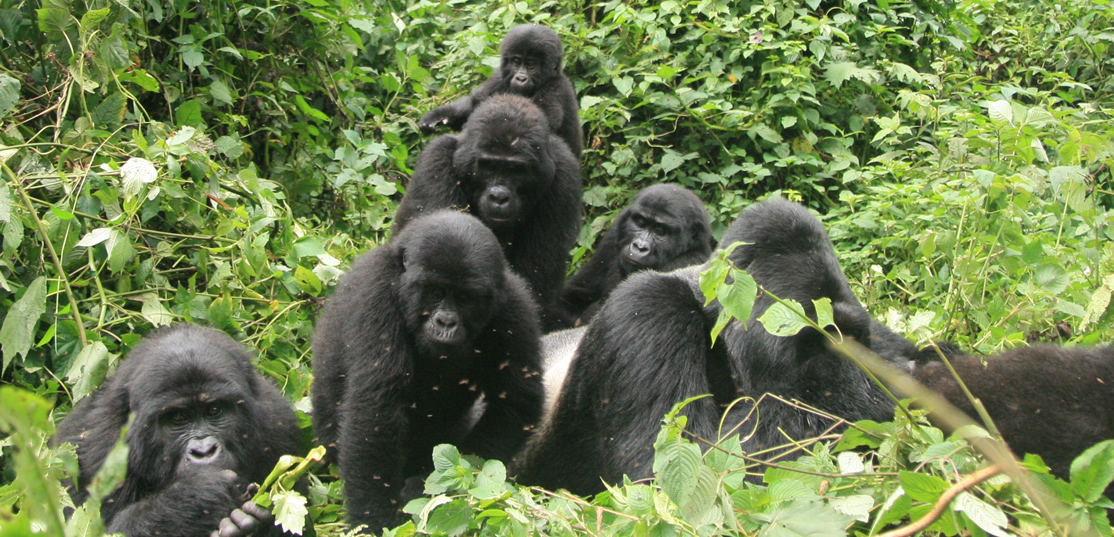
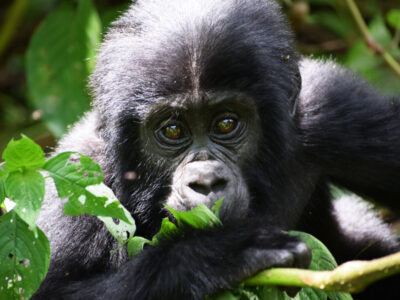
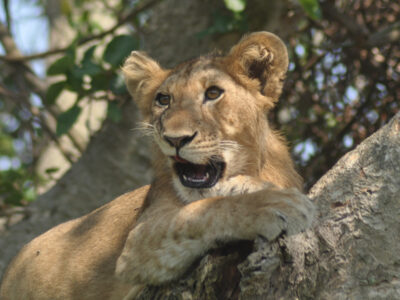
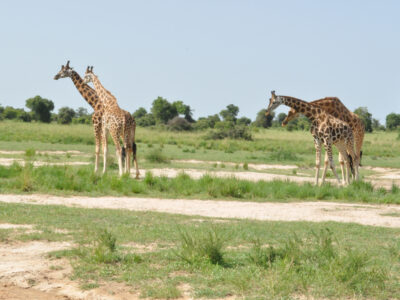
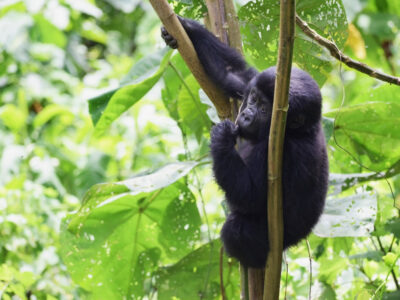
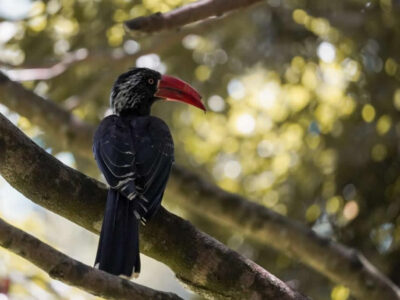
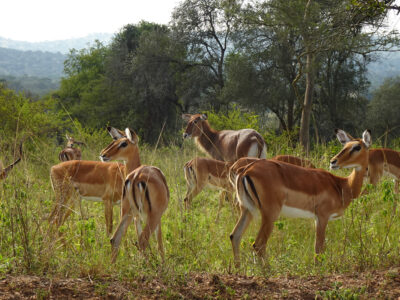
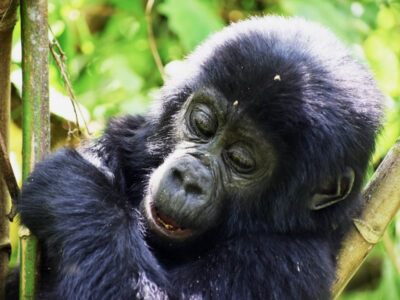
One Reply to “Gorilla groups/Families in Uganda”